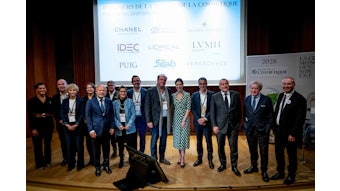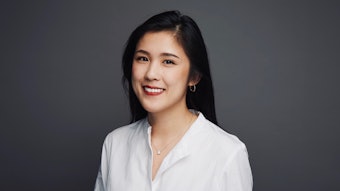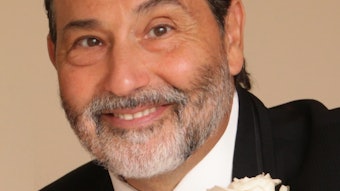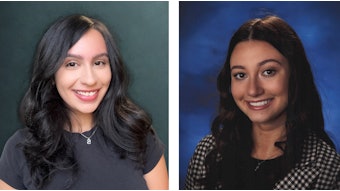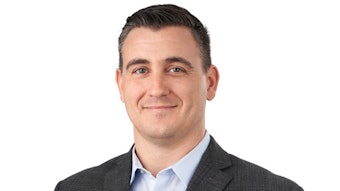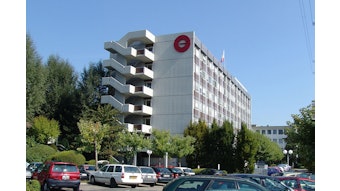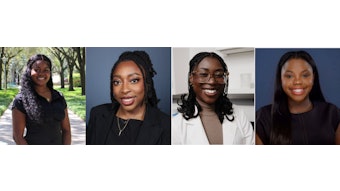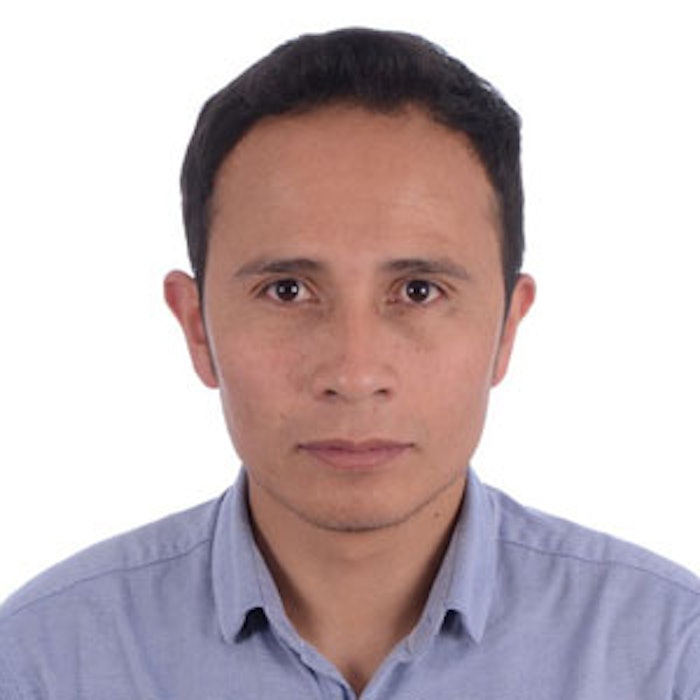
Mauricio Guzmán Alonso (MGA), of Belcorp Colombia, is an industrial chemist focused on areas including personal care, skin and sun care, biodiversity research, neuroscience and trichology.
What interests do you have, or what work are you conducting, that is relevant to cosmetics R&D?
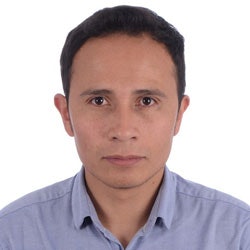 MGA: The cosmetic industry is an exciting world because it is active in many areas. This breadth has allowed me to delve into several areas of knowledge, awakening my interests in various topics focused on innovation.
MGA: The cosmetic industry is an exciting world because it is active in many areas. This breadth has allowed me to delve into several areas of knowledge, awakening my interests in various topics focused on innovation.On one hand, there is the search for natural ingredients from Latin American biodiversity, where there is great possibility for research and a whole world to be discovered in countries such as Colombia and Brazil, known for their high biodiversity.
On the other hand, there is the application of neuroscience methodologies, such as eye tracking and electroencephalography, as tools to optimize the process of formulating new products that get closer to consumer expectations. I am also interested in trichology as a deepening science for the development of hair products and their interrelation with R&D.
What do you like most about your work? What do you find most challenging?
MGA: My work is focused on the formulation and innovation of new products for sun care, skin care and personal care, taking into account technological and market trends. What I like most about it is the thematic diversity. It is necessary to prepare myself every day not only in technical aspects of cosmetic formulation, but also in that every ingredient or formulation becomes a world of interactions that include diverse knowledge in biochemistry, microbiology, toxicology, medicine, physics, psychology and marketing, among other sciences, giving me a continuous learning.
I think one of the challenging issues is to make differentiated proposals for a constantly changing cosmetic market that are at the forefront of technology. For example, in terms of personalization, we have a huge challenge: How can we make the ideal cosmetic product adjusted to the needs of the individual? We must take into account many factors such as the characteristics of the skin or hair, genetics, epigenetics, environmental conditions, habits, consumer preferences, etc., which are fundamental to connect and identify each individual with the developed product.
Another challenging issue is to connect the current cosmetic chemistry with the technological advances in artificial intelligence (AI), development of algorithms or prediction devices, augmented reality and virtual reality. Will these technologies reach their maximum potential within the process of innovation for cosmetic products? Can we massify them to consumers?
Describe one of your biggest achievements relevant to cosmetics R&D.
MGA: One of the most important achievements of my career and that I will never forget was the presentation of our research on Uvito de monte (Vaccinium meridionale S. or wild bilberry) during the 2011 Colamiqc congress held in Isla Margarita, Venezuela. There, I was able to share our first results of cosmetic applicability of the extracts of leaves and fruits of this Latin American endemic plant, which had never been studied before in cosmetics.
'...we will see more cosmetic actives with not only sustainability certifications, fair trade, etc., but also ingredients that through their development contribute in some way to counteract climate change, the shortage of water or food, and the saving of resources.'
We started this project from the collection of plant material doing rural work, knowing the habitat of this species, engaging with inhabitants of the region and hearing magnificent stories. This experience allowed me to expand my vision regarding the contribution of cosmetic research beyond the laboratory. I could see up close that many endemic species of wild plants are not preserved in their habitats because although there is awareness of their origin, the community does not take care of them since they do not have an economic relevance for them. A contribution from this point of view is to highlight the applicability for these species to be preserved.
Presenting this work at the congress was the culmination of a great job, and I was very pleased by its acceptance. We showed the benefits of collagen promotion, elastin, MMP inhibition and high efficiency in hydration, as well as improvements in wrinkles and firmness of the skin via the action of this species, which is promising for the development of a new cosmetic ingredient for skin care. This opportunity opened doors for me to do other jobs and participate more in the cosmetic guild.
Finally, we also won the Jose Joaquín Perez Villalba Prize awarded by Colamiqc to the best paper in research on natural ingredients. Also, thanks to this work, I participated in the competition for the IFSCC's Maison G. of Navarre prize by writing an essay on the many lessons learned; for which I received this prestigious award during the conference held in Rio de Janeiro in 2013. Latin American biodiversity is emerging as one of the great opportunities for innovation and differentiation for the region.
'In skin care, we will see ingredient launches with high efficiency performance obtained from waste materials used in fine perfumery, consolidating a new trend in active ingredients from fragrance to skin care.'
What about the cosmetics and personal care products industries excites you?
MGA: I love the high level of innovation, dynamism and competitiveness in the cosmetic industry. We see, for example, every year the launch of new ingredients and technologies involving scientists, research centers and universities from all over the world that offer us options to formulate well-differentiated products.
There are also consumption trends derived from lifestyle, socio-economic and cultural factors that we can decant in consumer requirements. Likewise, we can translate these requirements into tactile, visual and olfactory experiences framed within a cosmetic product that will go to a final recipient. This constant cycle is exciting for a cosmetic chemist because it keeps our mind in a permanent search for new worlds and development opportunities.
How would you like your role in the industry to evolve? What concepts do you want to explore?
MGA: I want to consolidate myself as a researcher in the cosmetic industry. I would like to work on research projects on biodiversity ingredients in partnership with Latin American universities, which have interesting projects with high cosmetic applicability. I think that in Latin America, there is a great opportunity for innovation between industry and academia.
I would also like to continue exploring in neuroscience tools and I have already participated in some projects finding interesting correlation results that allow us to evaluate the emotional response of the consumer toward a product. I believe that neuroscience will continue growing as a generator of new evaluation methodologies, trends and disruptive concepts.
'In the near future, we will see active ingredients developed from space materials and initiatives to develop cosmetic actives produced in different gravitational conditions.'
For example, synesthesia, a neurological condition that allows the perception of a stimulus by two or more senses. Will our target consumer have this type of experience with a cosmetic product? I believe so, and last year we published a paper related to how to evaluate the association of music with a fragrance and relate flavors with textures of skin care products.
Recently, a study was published exploring what would be the smell of stress; a very interesting synesthetic approach that inspires us and gives us an idea of where the subject is moving. Can we smell frizz in hair? Or establish the sound of correct hydration? It is innovating in this way, and I would like to go deeper into these issues.
What areas or technologies do you think are untapped for cosmetics R&D?
MGA: I think in the next few years, most of the waste produced in the industrial, food or agricultural fields could [be upcycled toward] the development of new cosmetic ingredients. The use of waste sources is a topic that has not been taken advantage of; although in 2018, we saw an interesting example in fine perfumery with the launch of "I am Trash, les Fleurs du Déchet," combining aromas obtained from the residues of flowers and fruits that had already been discarded by industry.
This topic is of great interest and acceptance, and we will see many opportunities with these developments. This opens doors to new forms of innovation. In skin care, for example, we will see ingredient launches with high efficiency performance obtained from waste materials used in fine perfumery, consolidating a new trend in active ingredients from fragrance to skin care.
I also believe the era of astrobiology within cosmetic science is worth exploring. Humanity is trying to solve fundamental questions such as: Can man survive in other planets? Can we colonize new habitats? Is it possible under extra-terrestrial conditions to grow our own food?
As a recent example, we have the investigation of the Chinese mission called "Chang'e-4" that landed on the moon in January 2019 and managed to sprout the first cotton seed on its surface, evaluating how a conventional plant can survive under critical spatial conditions. [The question then becomes:] What adaptation or evolution mechanisms are needed to live in these conditions?
In this way, some things have been developed in the cosmetic industry; for example, the development of ingredients with microorganisms resistant to extreme conditions. However, there is a universe to explore outside the earth. Why don’t we think on interstellar cosmetic science, to allow us to develop breakthrough products to protect the skin of the colonists who will live on the moon or on Mars? What will be the ideal SPF to protect the skin from the sun in these conditions?
In the near future, we will see active ingredients developed from space materials and initiatives to develop cosmetic actives produced in different gravitational conditions.
How do you envision the cosmetics/personal care industry of the future?
MGA: I think many people imagine the future of the cosmetics industry supported in biotechnology, AI and virtual reality. These technologies will be consolidating without a doubt and will be protagonists in the cosmetics of the future.
On the other hand, we are also going toward more holistic cosmetics, harmonized with the environment and society. From this point of view, I consider that the development of ingredients plays a fundamental role, and at this point, we will see more cosmetic actives with not only sustainability certifications, fair trade, etc., but also ingredients that through their development contribute in some way to counteract climate change, the shortage of water or food, and the saving of resources. The beauty industry will take a leading role in many global problems.
Finally, I believe that cosmetic chemists should participate more in research projects, consolidating new ideas and sharing them in prestigious journals such as Cosmetics & Toiletries and at the IFSCC Congress. This is the beginning of contributing and developing ideas with global impact. All countries have great scientists who are passionate for cosmetic research and they can to contribute to beauty progress participating in local and international congresses; and of course, sharing their findings.
